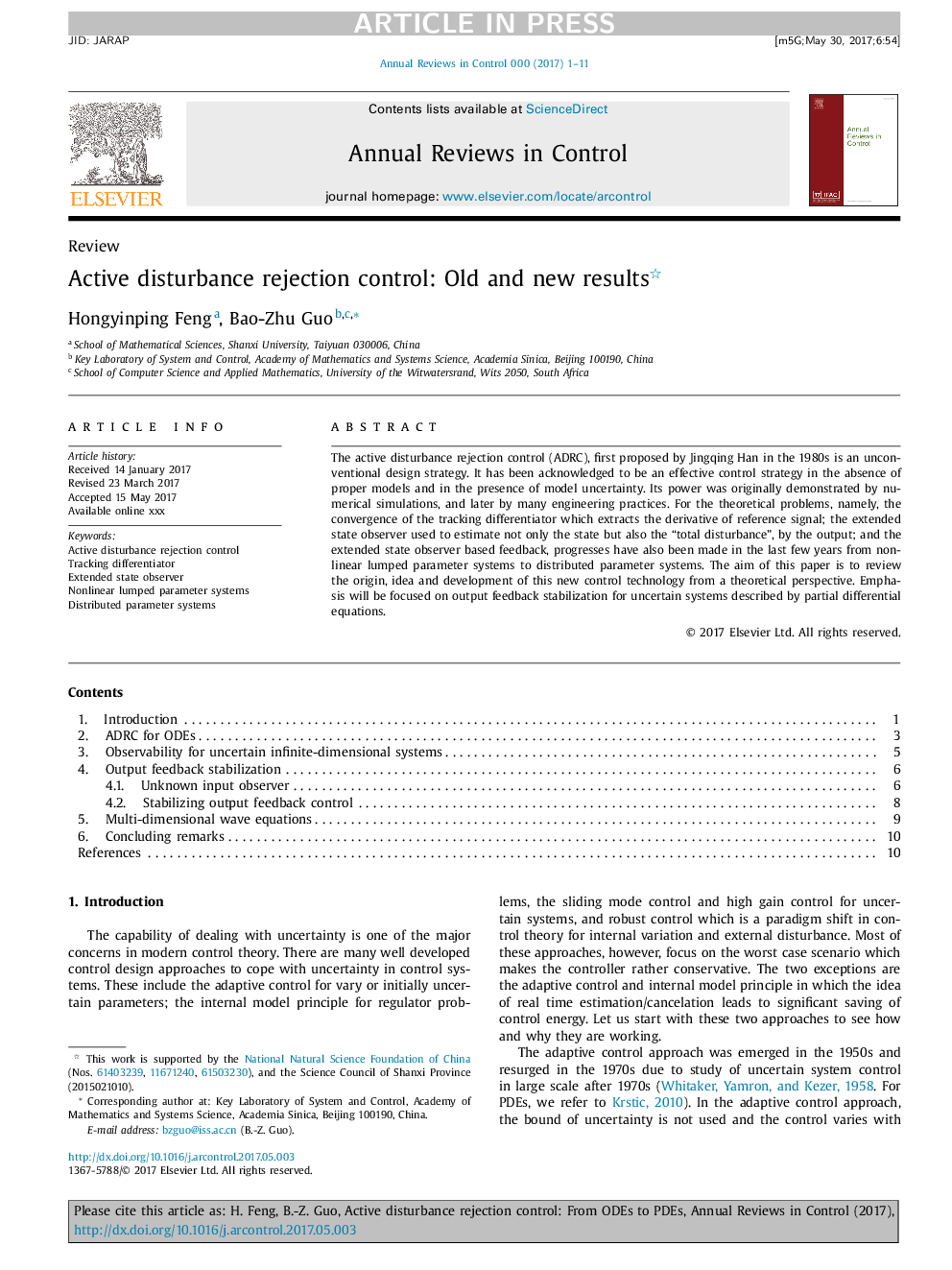| Article ID | Journal | Published Year | Pages | File Type |
|---|---|---|---|---|
| 7107829 | Annual Reviews in Control | 2017 | 11 Pages |
Abstract
The active disturbance rejection control (ADRC), first proposed by Jingqing Han in the 1980s is an unconventional design strategy. It has been acknowledged to be an effective control strategy in the absence of proper models and in the presence of model uncertainty. Its power was originally demonstrated by numerical simulations, and later by many engineering practices. For the theoretical problems, namely, the convergence of the tracking differentiator which extracts the derivative of reference signal; the extended state observer used to estimate not only the state but also the “total disturbance”, by the output; and the extended state observer based feedback, progresses have also been made in the last few years from nonlinear lumped parameter systems to distributed parameter systems. The aim of this paper is to review the origin, idea and development of this new control technology from a theoretical perspective. Emphasis will be focused on output feedback stabilization for uncertain systems described by partial differential equations.
Keywords
Related Topics
Physical Sciences and Engineering
Engineering
Control and Systems Engineering
Authors
Hongyinping Feng, Bao-Zhu Guo,
